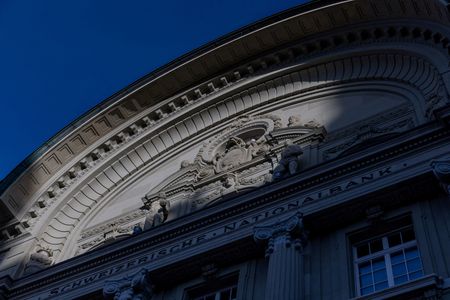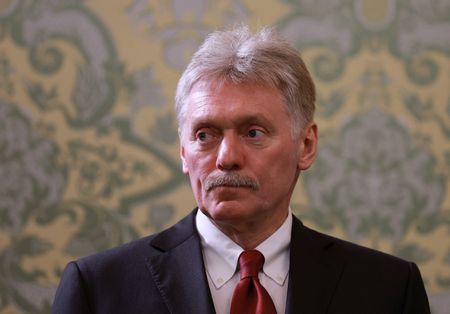By John Revill
ZURICH (Reuters) -The Swiss National Bank ramped up foreign currency purchases during the second quarter, data showed on Tuesday, as the central bank reacted to appreciation pressure on the Swiss franc after President Donald Trump announced tariffs on U.S. imports in April.
The central bank’s purchase of 5.06 billion Swiss francs ($6.36 billion) worth of foreign currencies in April-June was its highest quarterly level of foreign currency interventions for more than three years.
The SNB declined to comment.
SAFE-HAVEN INFLOWS
In April, the franc surged 7% versus the U.S. dollar, and 2.2% against the euro, with traders citing inflows into the franc amid heightened uncertainty around U.S. tariff policy, which pressured the dollar and lifted safe-haven currencies.
“The SNB most likely intervened to smooth FX volatility after U.S. President Trump announced his reciprocal tariffs in April,” said Karsten Junius, an economist at J.Safra Sarasin.
“Those increased political uncertainty and market volatility significantly and might have led to inflows into the franc.”
The SNB buys foreign currencies as a way of cooling appreciation pressure by supplying the market with francs.
A big surge in the value of the franc can hinder the SNB’s goal of price stability – annual inflation running at 0-2% – by making imports cheaper.
The increased SNB forex activity during the second quarter contrasted with small purchases totalling 1.26 billion francs over the previous five quarters.
SNB FACES BAD OPTIONS
SNB Chairman Martin Schlegel said last week the SNB would continue to use all of its tools, including currency interventions, to meet its inflation target, if necessary.
On Monday the SNB and the U.S. Treasury Department reconfirmed that they do not target exchange rates for competitive purposes after Washington added Switzerland to a list of countries being monitored for unfair currency and trade practice in June.
Charlotte de Montpellier, an economist at ING Bank, said the statement would not likely change the SNB’s stance, with the central bank likely to use currency interventions in future.
“The SNB currently faces two bad options. Either it does more forex interventions, which would attract negative attention in the U.S., or it takes interest rates below 0%, which it really doesn’t want to do,” she said.
($1 = 0.7957 Swiss francs)
(Reporting by John Revill; Editing by Susan Fenton)









